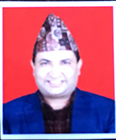Industrial Environment
This chapter provides information on Industrial Environment in the Domestic Tariff Area (DTA) of Nepal in general. They may or may not be applicable to Special Economic Zone.
Policy
- Entitlement to industry to receive various facilities, concessions etc. with regard to taxes and duties as per the relevant Act;
- Provision of additional facilities and concessions to the forest based and nation priority industries;
- No double sales tax on raw materials and products of the industry.
- Establishment of "One Window System" under the Department of Industries. This system is set up to provide all required services under one roof;
- Barring industries under Negative List and few sensitivity sectors, Foreign investment is open in all sectors. Provision is made to allow 100 percent equality from foreign investors;
- Legal safeguard in regard to repatriation, security of investment, incentive, facilities and other related aspects has been announced.
Labour
Legal Framework
The labour Act, 1992 lays down the legal framework and the basis for the rules, regulations and guidance on the proper management of any establishment employing 10 persons or more. It deals with matters relating to employment and security of employment, working hours and minimum wages, welfare of employees, employer employee relations and the settlement of labour disputes. Labour Regulations, 1993 complements the Labour Act with further clarification in issues such as security of profession and service, remuneration and welfare provision, health, cleanliness and safety, etc. The Bonus Act of 1974, as amended subsequently, provides a legal basis for the payment of bonus to the workers and employees of factories and commercial establishment. A new Labour and Employment Policy was brought out in 2005.
Labour Force
Nepal has an easily trainable and keen work force. Unskilled labour is cheap and abundant. Semiskilled and skilled labours are available in sufficient numbers. The government has established technical institutions to develop skills at the technical level in civil and electrical engineering, electronics, air conditioning/refrigeration, general, mechanics and auto mechanics. Training programmes are also geared to industrial and vocational training in wood working, metal working, leather working, general fitters, tailoring and so on. The programmemes in entrepreneurial and management development and the colleges of higher learning provide educated persons to be groomed for managerial positions on both public and private sector industries.
International Relations
Nepal has a history of maintaining good industrial relations during the past few decades when industrial activity gradually expanded in the country. Labour unrest, lockouts and strikes do not occur as frequently as they do in other developing countries. The Labour Act lays down guidelines and procedures for the settlement of disputes between employees and employees. These guidelines and procedures provide a favorable environment for the harmonious development of industrial relations.
Infrastructures
Industrial Centres
Nepal has made good progress in recent years in development and improvement of basic infrastructure facilities required for an accelerated programme of economic and social development. Efforts are continuing to further improve various facilities required for the development of trade, industry and commerce to bring them in line with modern international standards. The urban centers of Kathmandu valley (Kathmandu, Lalitpur, Bhaktapur), Pokhara and industrial towns in the Terai region, Biratnagar, Janakpur, Bhairahawa, Rajbiraj, Birgunj, Butwal, Nepalgunj and Hetauda offer good facilities for the establishment of medium and large scale industries.
Transportations
A. Air Transport
Nepal being landlocked, considerable attention is paid to the development of air transportation to support the growth of trade and the fast expanding tourist industry. Nepal is served by one international airport in Kathmandu, the Capital, and is connected by regular air services to London, Paris, Frankfurt, Amsterdam, Vienna, Moscow, Sanghai, Dubai, Abudhabi, Karachi, New Delhi, Calcutta, Bombay, Baranasi, Dhaka, Rangoon, Bangkok, Singapore, Osaka, Lhasa, Thimpu, Hongkong, Doha, etc. The Royal Nepal Airlines operates international flights using Boeing 757 and Boeing 727 aircrafts. The national carrier is preparing to spread its wings to other overseas destination in future. Other airlines operation through kathmandu are Biman Bangladesh, China South West Airlines, Pakistan International Airlines, Dragon Air, Druk Air, Sahara Air, Jet Air, Indian Airlines, Singapore Airlines, Thai Airways, Austrian Airlines, Saudi Arabian Airlines, Qatar Airways, etc. Due to the landlocked nature, cargo services are operated by some airlines to meet the growing demand for airfreight.
The hilly and inaccessible areas and the Terai region are linked by domestic air services operated by Royal Nepal Airlines (domestic) and other private airlines in 44 districts of kingdom. Recently, Nepal has adopted an open-sky policy allowing private airlines to step in the domestic as well as some international destinations. Emphasis is given to strengthen these services to promote balanced development in trade, commerce and tourism.
B. Road Transport
Development and expansion of transport facility is the most important pre-requisite for the development of a remote and village dominated country like Nepal. The country is linked North-South and East-West by a system of roads with a total length of 15905 km., of which 4781 km. is black topped, 4520 km. graveled and 7534 km fair weather roads. The major highways are the Mahendra Rajmarg (Ease-Wet highway), the Tribhuvan Rajpath (Kathmandu-Birgunj), the Prithvi Rajmarg (Kathmandu-Pokhara), the Siddhartha Rajmarg (Sunauli-Pokhara) and the Arniko Rajmarg (Kathmandu-Kodari). Other roads such as Banepa - Sindhuli - Bardibas, Mahakali Highway, Basantapur - Terathum, Katari - Okhaldunga, Gaighat - Diktel, Salyan - Musikot, Surkhet - jumla roads are under construction.
C. Sea Transport
Although landlocked, Nepal has access to the sea through the ports of Culcutta and Haldia in India. The port of Culcutta is about 1150 km from the Nepalese border close to Biratnagar. The average transit time through India could be 3 to 8 days. Transfer of freight by containers from Culcutta is becoming increasingly important. This tends to reduce the transit time. Registered clearing agents with good reputation could assist in the smooth and speedy clearance of goods through the port of Culcutta. Nepal also has access to the sea Through the cHittagang and Mongla ports of Bangladesh. Infrastructure are being created to increase the use of these ports in the international trade of Nepal.
Hydro-Electric Power
Nepal is well endowed with enormous hydro-power resources. This competitively cheap source of power provided a distinct advantage for Nepal to embark on a programme of rapid industrialization. By the end of 2002 hydropower generation reached 528 MW in the country. In order to meet increasing demand of power, steps will be taken to consolidate and strengthen existing generation facilities with a view to increase efficiency in production and distribution of energy. Major projects on which preliminary studies have been undertaken include Karnali (Chisapani) 10800 MW, Upper Arun 335 MW, Pancheshowr 6480 MW, Lower Arun 308 MW, and Upper Karnali 300 MW hydro electric projects. Another major project West Seti Hydel project (750 MW), is being taken up by a private sector (SMEC West Seti Hydro electric Corporation). This is being developed as an export oriented project.
Telecommunication
The Nepalese Telecommunications network is fully digitalized. Nepal Telecom and United Telecom is the service provider in the country. Nepal Telecom has optical fiber link to India and satellite link to other countries of the world. The telecommunications sector has been liberalized and private sector participation in the development and operation of telecommunications sector is opened. The Government has established Nepal Telecommunication Authority, an independent regulatory body, to facilitate private sector participation as well as fair competition in this sector. The government further intends to develop this sector to cater for the demand of the Trade, Industry, Commerce and Tourism sector in the coming millennium. By the end of 2002 the country had 153 telephone exchanges.
Financial Institutions
The financial system in Nepal consists of the Nepal Rastra Bank (the Central Bank of Nepal), seventeen commercial bank, and nineteen development finance institutions.
The Nepal Rastra Bank's main function is to regulate and supervise the banking institutions in Nepal. It issues currency, determines the daily buying and selling rates of foreign currencies and implements monetary policy to secure financial stability and growth in the economy.
Industrial, agricultural and commercial credit is provided by the commercial banks operation through branches spread throughout the country and two development finance institutions. Besides providing banking services, commercial banks provide industrial term loans and short term working capitals loans to business and industrial enterprises. Nepal Bank Ltd. and Rastriya Banijya Bank are domestic commercial banks with a wide network of branches in the country. Nine foreign joint venture banks - Nepal Arab Bank, Nepal Indo-Suez Bank, The Standard Chartered Bank, Nepal SBI Bank, Himalayan Bank, Everest Bank, Bank of Kathmandu, Nepal Bangladesh Bank, Nepal Bank of Cylon, and two regional commercial banks, Nepal Industiral and Commercial Bank Ltd. and Lumbini Bank Ltd. also provide full fledged banking services. The open market exchange rates is determined everyday by commercial banks themselves. Citibank, American Express Bank and Union European de CIC run representative offices in Kathmandu. There has been a continuous increase in both the number and size of banks, financial companies and insurance companies as a result of liberal policy adopted by the Government. At present, the number of finance companies has reached to 59 and the number of cooperative societies with limited banking authority is …... Similarly, there are ….. insurance companies currently operating in the country.
The Nepal Industrial Development Corporation and the Agricultural Development Bank extend assistance to investors in industrial and agricultural projects, respectively. Besides, rural development banks have also been constituted to provide loans to the projects designed to uplift the income generation of rural population.
Insurance coverage on business and commerce could be obtained through the Rastriya Beema Sansthan or other insurance agencies which operate in Kathmandu.
Taxation
Company Taxation
The present rate of corporate tax is 25 percent. However, industries, other than cigarettes, bidi, cigar, khainy, tobacco, alcohol or beer, will not be imposed more than 20 percent income tax on their industrial come. The tax rate for commercial banks and financial institutions is 30 percent.
Personal Taxation
The single or married status of an individual determines the relief to which he/she is entitled. Taxable income includes profits from a business, income from salaries along other benefits provided by the employer, income from house rent, interest, dividends and other sources.
Royalties, Technical Service Fees and Management Fees
Royalties, technical service fees and management fees will be taxed only at a concessionary rate of fifteen percent. Income tax will not be levied on the interest on foreign loan.

Damodar Bhandari
Honorable Minister

Krishna Bahadur Raut
Secretary


